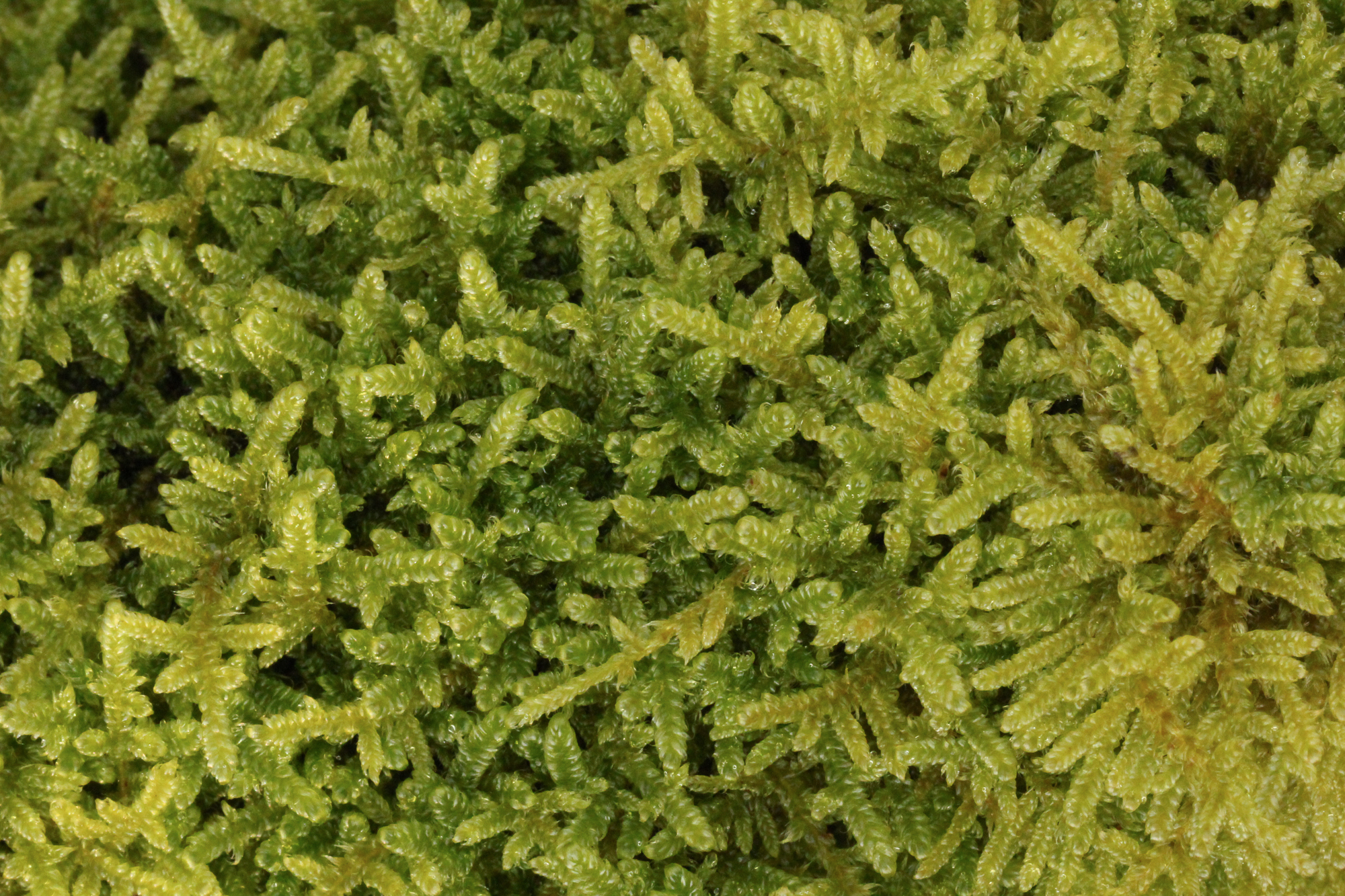Identification notes
Hypnum cupressiforme is an extremely variable pleurocarpous moss which has been split and lumped – taxonomically speaking – so often that it’s difficult to keep up.
Leaf and cell characters, including size, colour and curvature all vary within as well as between varieties. Capsule characters are more reliable, if capsules are present at a suitable stage of development.
Probably the most common variety in many areas is H. cupressiforme var. cupressiforme which often covers entire tree trunks or branches, growing in extensive mats. Its shoots lie flat to the tree and are a mid-green, sometimes tinged brownish and irregularly branched. It also grows on decaying wood and rock. The leaves are untoothed, lack an obvious nerve, are turned to one side (especially at the shoot tips) and overlap, giving rise to its common name. The shoots look quite smooth and shiny from above.
As well as four currently recognised varieties of H. cupressiforme (three of which are common and widespread), Hypnum andoi is also very common and is considered distinct enough to be given species status (it was formerly regarded as another variety of H. cupressiforme). Capsule-less plants of this species (especially on tree bark) can resemble slender forms of H. cupressiforme var. cupressiforme and although easily separated by capsule lid characters, it is unwise to try to record sterile plants as anything other than Hypnum agg.
Hypnum cupressiforme var. resupinatum, and the very rare var. heseleri are normally distinct enough even when lacking lidded capsules to be identified, but if you are in any doubt which variety to record, you should record as H. cupressiforme or even as H. cupressiforme s.l. which includes all of the H. cupressiforme varieties. H. cupressiforme var. lacunosum seldom produces capsules but it is a robust, often golden-brown plant which differs from the other varieties of H. cupressiforme in its preference for base-rich grassland and other terrestrial habitats.
Species varieties
The taxonomic status of the Hypnum cupressiforme group is under constant review. There are currently 4 varieties recognized in Britain and Ireland (links are to the BBS Field Guide accounts):
- H. cupressiforme var. cupressiforme
- H. cupressiforme var. heseleri
- H. cupressiforme var. lacunosum
- H. cupressiforme var. resupinatum
The BBS Field Guide treats the latter two varieties as species rather than varieties, and the main H. cupressiforme account refers to H. cupressiforme var. cupressiforme. H. cupressiforme var. heseleri is very rare and is not included in the Field Guide.
Small forms of Hypnum cupressiforme var. cupressiforme in particular can be mistaken for a number of other pleurocarps which also grow on living or dead trees.
Sematophyllum substrumulosum is a relative newcomer to Britain but is spreading, and often grows with H. cupressiforme on fallen, decaying wood, in conifer or mixed plantations. Its capsules – which are normally present year-round – are smaller and shorter than those of Hypnum species and are usually near-horizontal, with rostrate lids. Examination of the glossy, tapering leaves under a high power microscope will reveal a few obviously enlarged alar cells.
Herzogiella seligeri is an uncommon species of fallen, decaying trees and usually has a preference for hardwood species such as Castanea sativa and Quercus robur. It often grows with H. cupressiforme var. cupressiforme and looks very much like it. However, it is easy to recognise when it starts to produce its capsules as they mature in spring and summer, long after the fruiting season of H. cupressiforme. They are inclined and long, and borne on a long seta.
Pylaisia polyantha could be confused with H. cupressiforme var. resupinatum, but produces abundant, near-erect capsules with relatively long, dark red setae and conical lids and typical specimens have two or more generations of capsule present at any time. Microscopic checking of the cells walls of the capsules may be necessary to confirm identification: those of H. cupressiforme var. resupinatum have thickened longitudinal cell walls whilst those of Pylaisia are equally thickened.

































